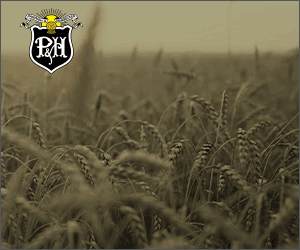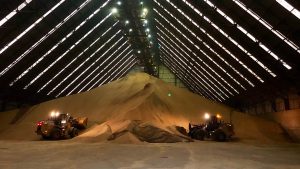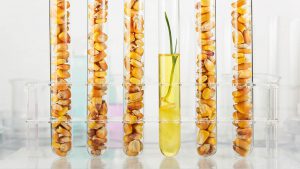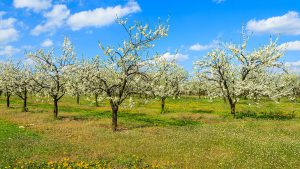Conservation agriculture
A PROFILE OF A MOROCCAN FARMER
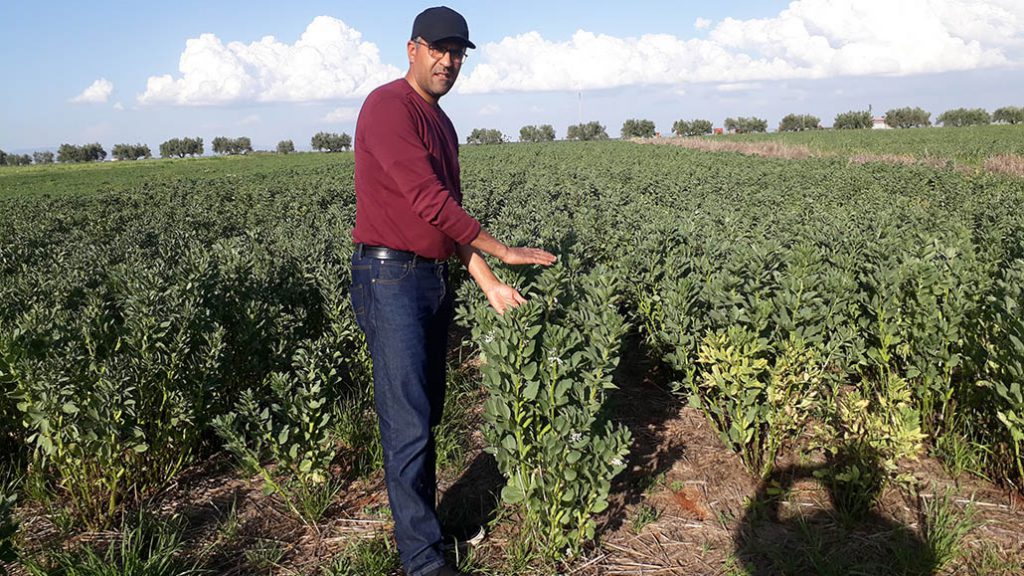
AZIZ ZINE EL ABIDINE knows he’s lucky. He can read, he’s highly educated and he farms 80 times more land than the average Moroccan farmer. The decisions he makes on his nearly 2,000 acre farm are based on data, and they’ve helped him to improve soil quality, and therefore, yield. He’s a pioneer in his region, not only because he’s one of the 0.02 per cent of Moroccan farmers who has adopted conservation agriculture, but also because he uses what he’s learned to help other Moroccan farmers improve production on their farms.
Zine El Abidine graduated from the University of California, Davis in 2002, where he completed a bachelors degree in Biological Systems and Agricultural Engineering, specializing in precision agriculture. Although he was pursuing a PhD, he had to leave his studies in order to take up the family farm. Since then, he has enjoyed taking up the challenge of adopting and adapting new practices on the farm, moving from conventional practices to conservation agriculture.
Zine El Abidine and his family farm in the Meknes region of Morocco. Meknes is situated in the middle of Saiss plain, one of the most fertile and rich plains in the country. The region is characterized by a hot summer Mediterranean climate. Temperatures range from 5° C in January to 34° C in July.
The limiting factor in Morocco is rainfall, says Zine El Abidine. On an annual basis, Meknes region receives just 471.4 mm of rain. By comparison, London, Ontario region farmers receive 1,011.5 mm of precipitation annually, 845.9 mm of which falls as rain. To make matters more challenging, records show just how inconsistent rainfall is in Morocco. In December, for instance, crops receive 69.8 mm on average, while in the months of July (0.7 mm) and August (1.7 mm) they receive considerably less.
Zine El Abidine is the manager of a diverse farm. Of his acres, about 1,500 are devoted to crop production. He grows cereal crops, including canola, barley, oats, triticale, and sunflower, as well as soft and hard wheat. He also grows pulse crops, including fava, lentils, vetch, and garbanzo beans. Hectares are dedicated to beef and sheep production, as well as orchards, including 200 acres of non-irrigated olives, and 37 acres of peaches, nectarines, and pears, the only crops that are irrigated.
In his lifetime, Zine El Abidine has noticed a change in weather patterns, particularly in annual rainfall. Weather data from the National Institute of Agricultural Research (INRA) corroborates what he’s seen. In Meknes, for example, average rainfall in 1931 was 590 mm per year and the rainy season lasted nine months. Today, average annual rainfall has dropped to 460 mm and the rainy season lasts just six months.
Looking at his soil health, he knew he had to make changes if the farm were to remain profitable. When Zine El Abidine took over the farm in 2002, the soil was degraded, he says. Organic matter was low, and soil erosion and tilth were real problems. Slowly, he began to implement new conservation practices on the farm, starting first with no-till.
In 2006, he conducted an experimental trial on 500 acres, the majority in wheat and the remainder in lentils. With just 400 mm rainfall that year, the average yield on his farm for wheat was 0.2 tonnes/acre.
During the 2007 growing season Zine El Abidine says his farm saw just 220 mm of rain, 128 of which fell in two days in April, just before harvest. While yields were low overall, there was a significant difference between those in no-till fields versus those in tilled fields.
After seeing the results, Zine El Abidine invested in a Metasa (now Kuhn) 3-meter direct seeder, which cost him about $45,000, and made the switch to no-till on the remaining acres. At this price, he says he could buy six normal seeders. But the money he saved in fuel costs, approximately $30.55/acre/season, made the investment worthwhile.
“It was very expensive,” he says. “But it paid itself off in the first year.”
Zine El Abidine made rotational changes too in order to gain better weed control. The necessary herbicides, he says, are not registered in Morocco, and there is no market for them so the big companies won’t bother to go through the registration process.
“We do not have selective, broadleaf herbicides for legumes, like lentils and beans,” he says. “So I would have to go in and weed by hand. It takes a lot of people and a lot of money. With nearly 1,500 acres, I would only probably be able to have 75 acres of beans.”
“Otherwise, if I went over that I wouldn’t be able to harvest anything because weeds would take over,” he adds.
But with no-till, Zine El Abidine says he is able to delay seeding until after a rainfall. Once weed germination begins, he kills everything off with glyphosate. Controlling germinating weeds and not turning the soil allows for maximum control, he says, up to 80 per cent, and has opened up more hectares to pulse crops.
“So I now have a fairly clean bean field — and all the benefits of having legumes in your rotation,” he says. “I don’t have to pick by hand.”
In Morocco, precision agriculture technology is very expensive. But that hasn’t stopped Zine El Adibine, who says the numbers prove that the investment is worth it. In the future, he would like to use variable rate applications and auto guidance for tram tracks.
“Right now, to spray my weeds I have to have a guy with a flag and he will go every 12 or 24 meters, depending on the width of the sprayer, and have the flag, so we can see it from the other side and try to have a straight line,” explains Zine El Abidine.
By overlapping in spots, he believes he is losing more than USD$10,000 a year, maybe more. An auto-guided system, he says, could save him those extra costs.
He also dreams of finding a way to get water to the farm. About 40 acres of irrigated orchards can generate more income than all of his cereals. Currently, water for irrigation is coming from wells, but the flow rate similar to that of a kitchen tap. He’d like to leave his two small children with 250 acres of irrigated orchards.
In his lifetime, Zine El Abidine hopes that wildlife and endangered species will return to his natural reserve land. Hawks and otters used to thrive there once.
HELPING OTHERS
Zine El Abidine believes if other Moroccan farmers could see the data they would better understand the benefits.
“But you have to understand, in Morocco, probably now 70 per cent of farmers have less than 25 acres,” he says. “And 70 per cent are illiterate, so in order to convince them to go towards an innovation that is a little bit more information based… For an illiterate person, that’s very hard.”
Still, he urges farmers — both in Morocco and beyond — to implement just one of the many techniques. “Try it on a small part of land,” he says. “If you don’t believe in it, at least try it. You have nothing to lose.”
Through a local cooperative, Zine El Abidine has been able to convince NGOs to finance seeders and provide them for free to farmers who are willing to try it. The cooperative supplies seed, fertilizer, and the planter. The farmers just have to make the land available. The cooperative has been a great success, converting nearly 25,000 acres using just 20 seeders.
Despite the success, Zine El Abidine says progress is slow.
“We are too comfortable in our own bubble, even though we feel and we know that something is going wrong, we’ll find excuses rather than trying something that is new,” he says. “There’s a psychological block that tells some that you can’t do farming without tilling.”
“I was the village fool for over a year,” he says with a chuckle. “I was okay with it because I did the math.” •


